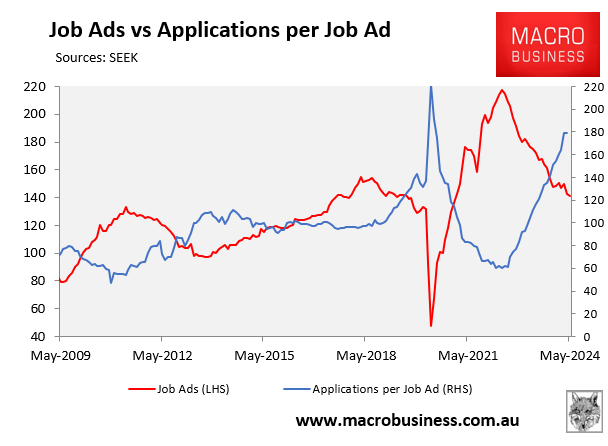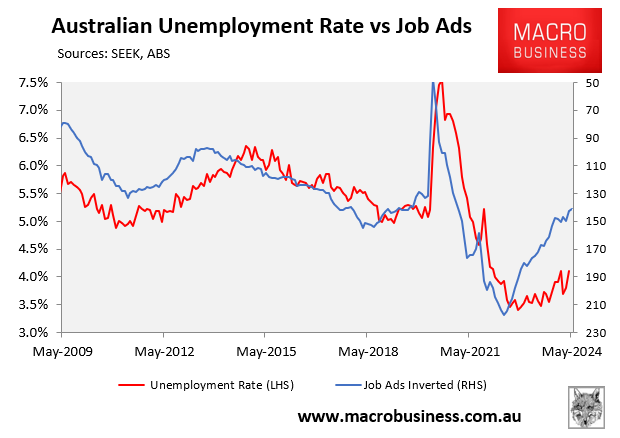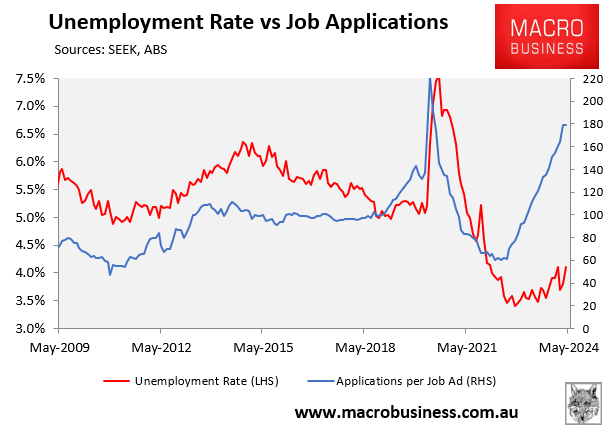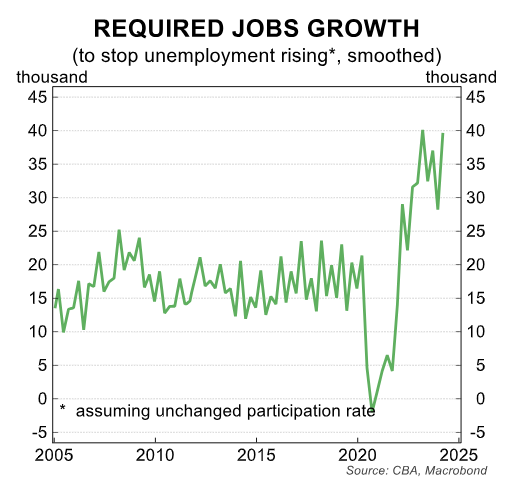SEEK has released its May employment report, which showed further deterioration.
The number of job ads posted by SEEK fell by 0.6% in May to be down 17.9% year-on-year.
The number of applicants per job ad also rose by 0.3% in April (this series always trails by one month).
Advertisement
The following chart plots job applications against the number of applications per job ad. As you can see, both series have sharply deteriorated:

Based on historical correlations, the sharp decline in job ads points to rising unemployment in Australia:
Advertisement

Some economists have noted that SEEK’s job ad series is impacted by changes in market share in the employment advertising space. Therefore, the decline in SEEK’s job ads could have been caused, in part, by a reduction in the firm’s market share.
However, this critique is squashed by the even sharper rise in the number of applicants per SEEK job ad, which is not impacted by changes in market share.
Advertisement
As illustrated below, the number of applicants per job ad is tracking around 55% above the same time in 2019, suggesting labour supply is running well ahead of demand:

Historically, such a gigantic rise in applicants per job would be associated with significantly higher unemployment.
Advertisement
Regardless, given historically strong net overseas migration, Australia needs to create nearly 40,000 jobs per month to keep the unemployment rate stable.
And since the economy is not nearly strong enough to generate this level of job growth, Australia’s unemployment rate will inevitably rise.

Advertisement
It is merely a question of how far and how long.
For what it is worth, I am not expecting the unemployment rate to increase in the May ABS labour force survey (releasing on Thursday) for the simple reason that this survey is inherently volatile. Large rises in unemployment, as occurred in April, are typically followed by smaller falls the following month.
Nevertheless, I expect the unemployment rate to rise briskly over the remainder of this year to be running close to 5% by year’s end.
Advertisement

